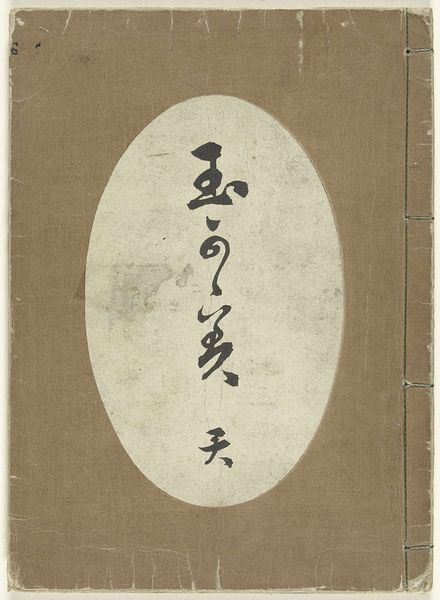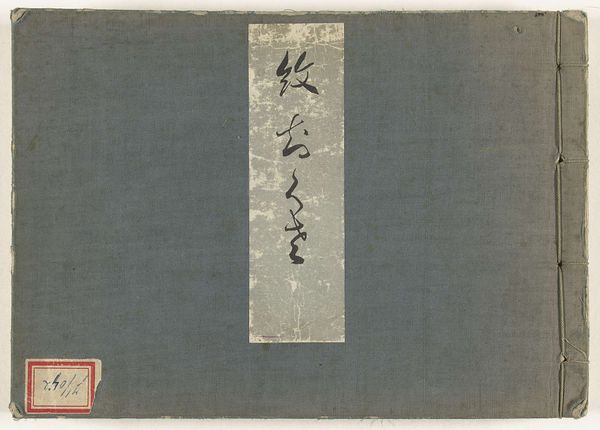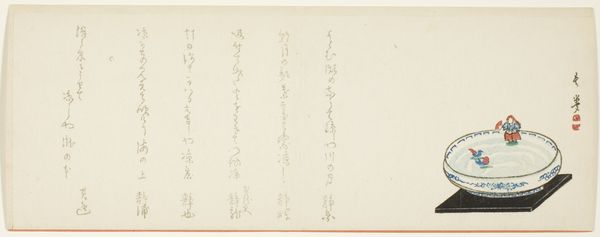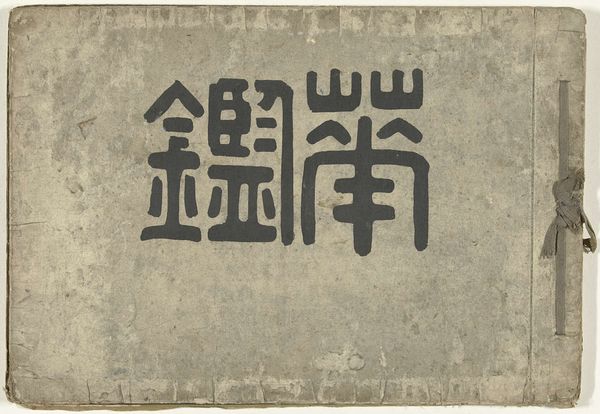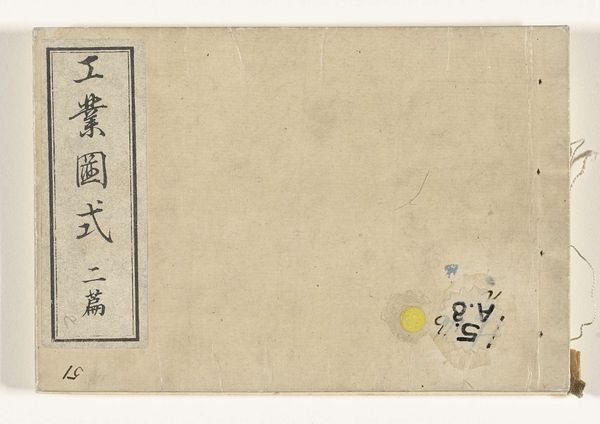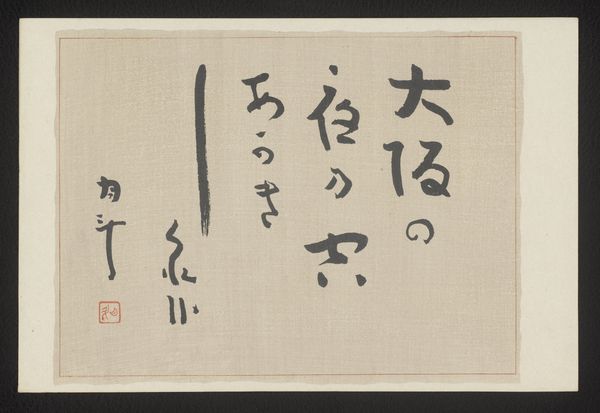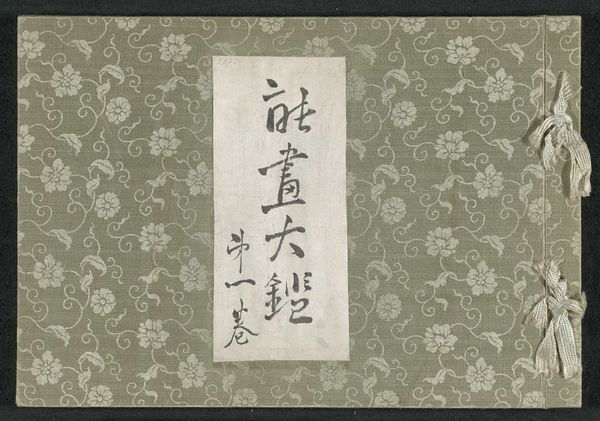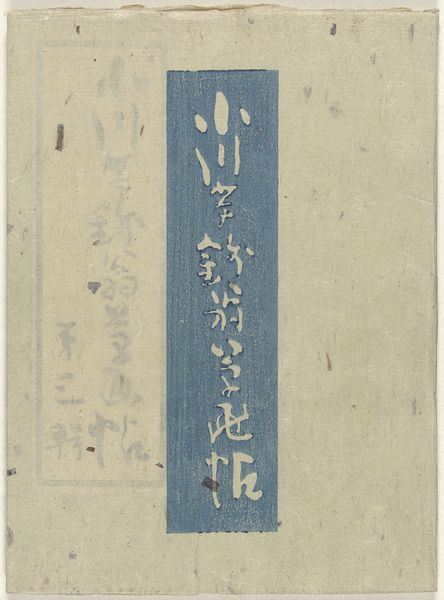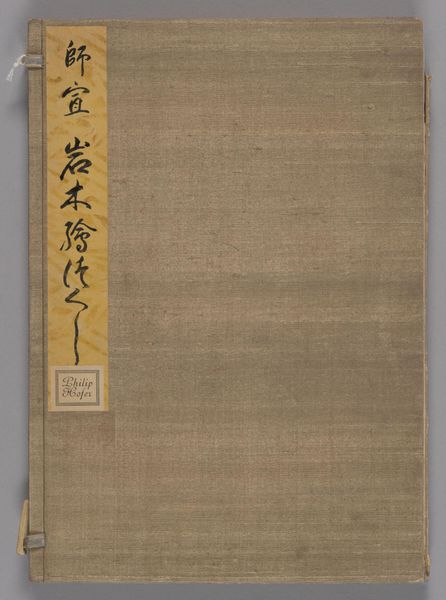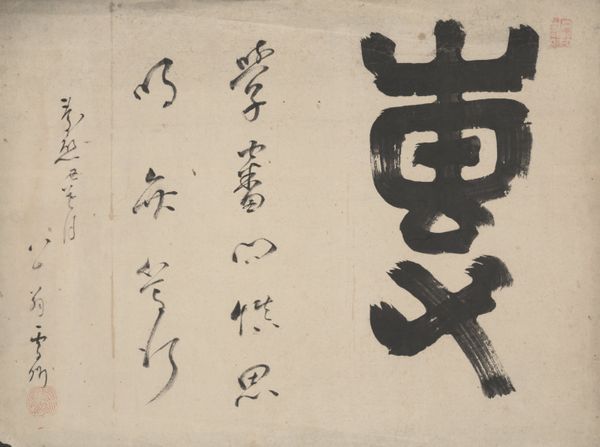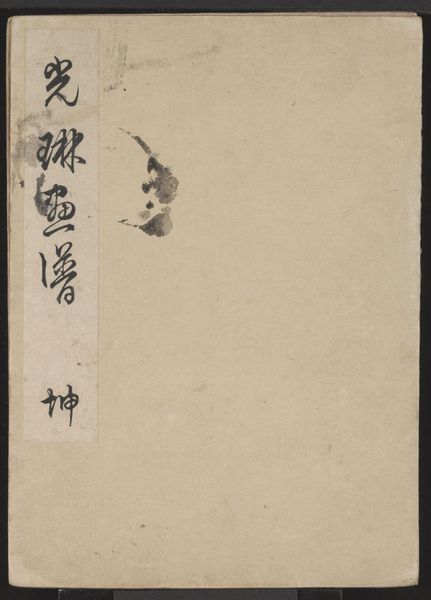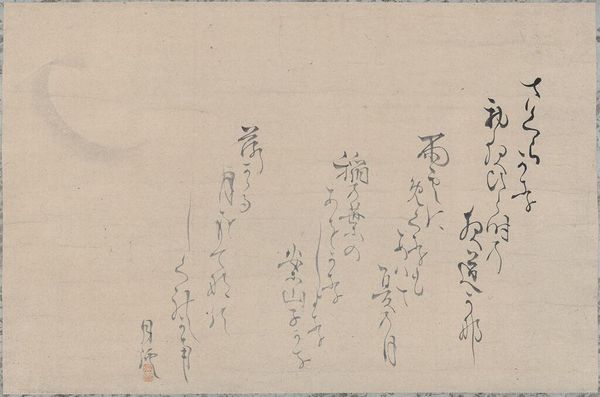
paper, watercolor, ink
#
asian-art
#
paper
#
watercolor
#
ink
#
abstraction
#
calligraphy
Dimensions: height 255 mm, width 368 mm, thickness 6 mm
Copyright: Rijks Museum: Open Domain
Editor: Here we have "Stromend water," or "Streaming Water," a work from 1904 by Mizuta Seikô, rendered in ink and watercolor on paper and currently at the Rijksmuseum. It's a very spare, abstract work... almost more about surface and texture than anything else. I'm struck by the neutral tan background and the elegant calligraphic marks in white. What do you see in this piece, from a formalist perspective? Curator: The piece intrigues because its supposed subject – streaming water – is addressed almost paradoxically. We're invited to contemplate flow, yet the composition relies on static vertical lines. Consider how Seikô’s brushstrokes dictate our experience; each character exists as an isolated unit, a building block of textual, not necessarily watery, meaning. What effect do you think the varying thickness in lines creates? Editor: It makes me think of a tension...like controlled chaos? The lines aren't uniform; some are bolder, more decisive, and some thinner and fragile. It does make the image dynamic in an odd way. The controlled aspect you're noting definitely stands out, however. Do formal constraints or structures always produce a kind of creative tension, you think? Curator: Precisely. Formal limitations—the structural elements that compose the art object, produce specific parameters. It's within and against these elements that the artist negotiates his vision. Think about the empty space: the raw paper versus the ink, which highlights the composition’s skeletal nature. A dance between presence and absence. Editor: It really does draw attention to the bare materials and shapes, doesn't it? Focusing on those concrete aspects, as opposed to searching for deeper metaphorical meanings, completely shifts how I see this work. Thank you! Curator: Indeed! Attending to form first reveals the intentionality within apparent simplicity. A valuable lesson.
Comments
No comments
Be the first to comment and join the conversation on the ultimate creative platform.
